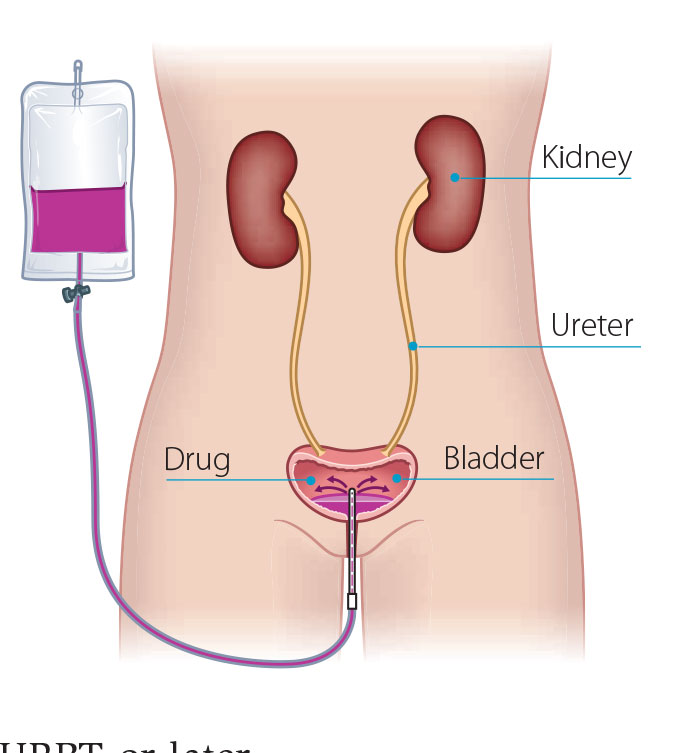Treating advanced bladder cancer

On this page:
Treatment for advanced bladder cancer
If your cancer has spread to another part of your body, for example the liver, lungs or bones, it can still be treated. Treatment is usually to try to control the cancer rather than to cure it. You may also have treatment to improve any symptoms you have.
Often advanced bladder cancer is treated with chemotherapy or other cancer drugs. There may also be treatments that you can have as part of a clinical trial.
Chemotherapy
Chemotherapy for advanced bladder cancer can often slow its growth and keep it under control for some time. Examples of drugs used for advanced bladder cancer include gemcitabine and cisplatin.
Chemotherapy can cause side-effects, so your doctor may advise less intensive chemotherapy or a different treatment, depending on your age and general health. Read more about chemotherapy, including how it is given and possible side-effects.
Immunotherapy
Immunotherapy drugs encourage the immune system to recognise and help destroy cancer cells. A new group of drugs called checkpoint inhibitors can be used when the cancer is locally advanced or advanced. For example, pembrolizumab and atezolizimub. Your oncologist will advise you if they think immunotherapy drugs are suitable for you.
Surgery
Surgery for advanced bladder cancer is usually to improve symptoms.
TURBT surgery
You may have a TURBT procedure to remove as much cancer as possible from your bladder. This is to stop any bleeding and relieve
pressure in your bladder from the cancer, which can make it hard to pee. It may also slow the spread of the cancer.
Surgery to unblock your kidneys or your ureters (tubes that connect your kidneys to your bladder)
Sometimes the cancer can block your ureters or kidneys. If this happens, urine (pee), can build up in the kidneys and stop them from working properly. There are 2 ways doctors can help with blockages:
- Stents: The doctor puts a small tube called a stent into the ureter, to keep it open, so that the urine can flow properly. The stent is put in through
your urethra – the tube that brings urine out of your body. - Nephrostomy tube: The doctor puts a tube through your skin. The urine passes through the tube into a bag on the outside of your body.
Radiotherapy
Radiotherapy can control advanced bladder cancer and help with symptoms, such as bleeding in your bladder or bone pain. Radiotherapy given to improve symptoms and help you to feel better is sometimes called palliative radiotherapy.
Often with palliative radiotherapy you will have a single dose or a short course of treatments.
Any side-effects affect the part of the body that is treated. With a short course of radiotherapy, you may not have any side-effects or side-effects may be less severe than with a longer course.
Coping with side-effects
The type of side-effects you get will depend on the type of treatment, the dose, the duration and your own general health.
Your doctor or nurse will discuss any possible side-effects with you before your treatment. You can also read about the different treatments for information on possible side-effects.
For more information
Phone
1800 200 700




